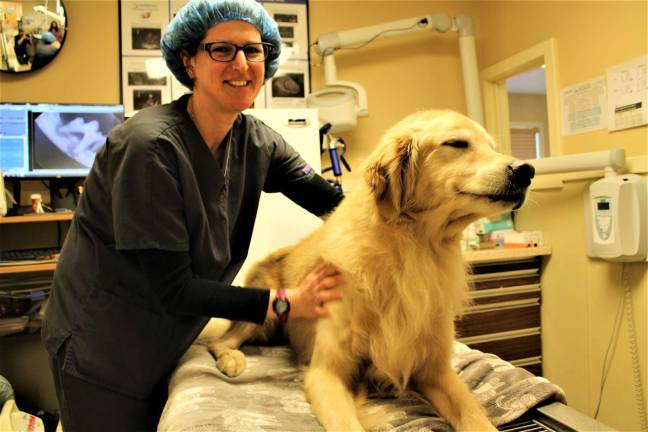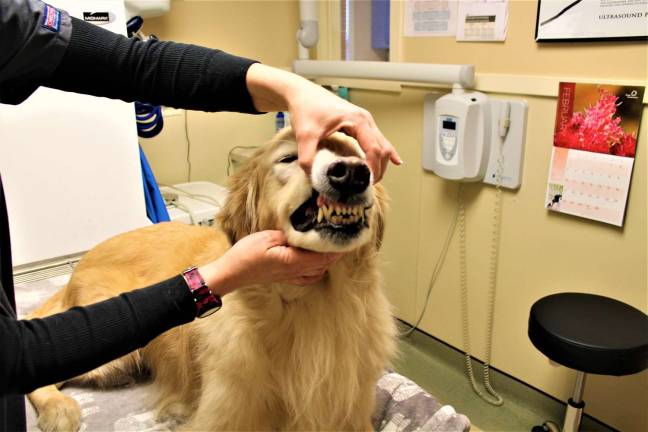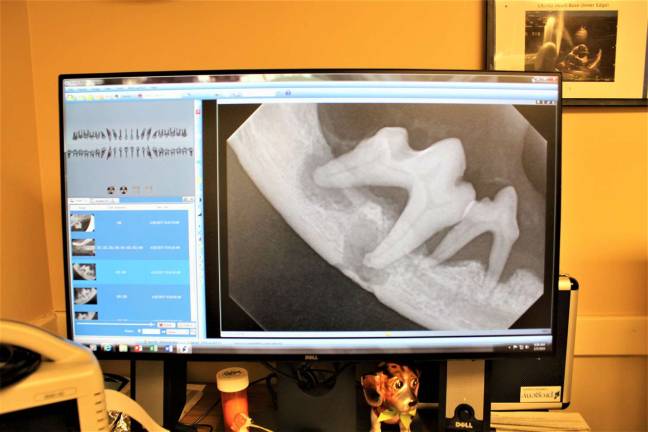By Garrett Hemmerich
WEST MILFORD – In honor of February being National Pet Dental Health Month, the Greenwood Lake Animal Hospital is trying to raise awareness about the importance of looking after your pet’s dental health.
“Dental disease is one of the most common things that we see as a problem with pets,” said Dr. Eric Louër, D.V.M., owner and director of the hospital, located at 1925 Union Valley Road, since 1994. “Probably close to three quarters of the animals have dental problems, to some degree.”
Some of the potential symptoms of dental health issues to keep an eye out for include bad breath, drooling, swelling, nasal discharge, a visible abscess, and an avoidance of dry food, according to Louër.
The problem is that many pets will continue to eat through dental issues, so the signs won’t always be clear.
That’s why the American Veterinary Medical Association recommends brushing your pet’s teeth daily and having an annual check-up and teeth-cleaning done, beginning at one year of age.
Unfortunately, few people tend to actually comply with these recommendations, which is why the majority of cases that the hospital sees are much more advanced, according to Louër.
The reasons behind this noncompliance vary, but the most common are cost, an underestimation of the health problems that dental issues can lead to, and misconceptions about how involved the monitoring of their pets’ dental health can be.
While many pet-owners tend to envision their pets’ dental health check-ups much like their own routine dental visits, Dr. Louër likens the process more to going to an oral surgeon than a general dentist for a quick cleaning.
The good news is that, according to Louër, the standard of care that they can provide has greatly improved over the years, especially with the availability of tools like the high-speed drill and dental X-ray.
“Two-thirds of the teeth are underneath the gum line,” Louër said. “So you cannot really assess the disease unless you do an X-ray.”
That X-ray is not free, however, which leads to one of the other main problems for pet-owners: cost.
“We have to anesthetize the animal,” Louër said. “Right away, that raises the cost of the procedure.”
Only when the animal has been anesthetized can a complete oral examination and X-ray be complete, according to Louër.
In addition to the common concerns and misconceptions concerning pet dental health, Louër says dentistry is also an area of study that has been historically neglected in veterinary school.
“When I went to vet school, there was no real dental (education),” said Louër. “We didn’t really have training in dentistry. All we were doing was scaling teeth.”
That’s why Louër and the other staff members at the hospital hold training sessions at the office in addition to attending wet labs where they can improve their technique and learn from dental specialists.
You can learn more about your pet’s dental health by visiting the American Veterinary Medical Association’s website at www.avma.org.


